Join me as we learn how to propagate Pothos plants, some of my favorite indoor plants!
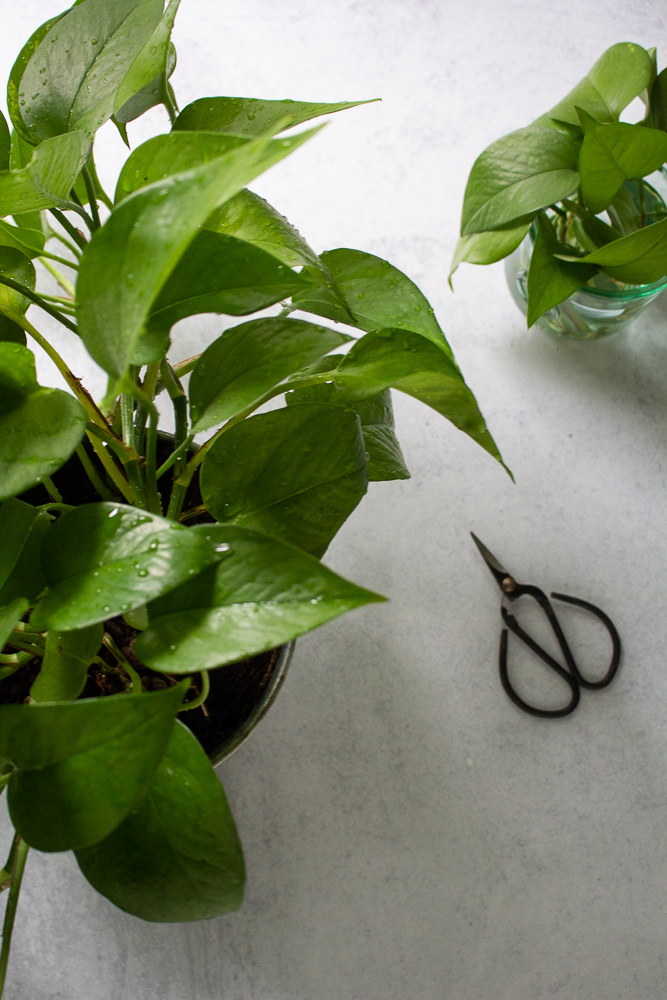
A few years ago, I purchased a gorgeous Pothos at a local garden store. It was on the pricy side, at least as indoor plants go, but it was so green and vibrant that I couldn’t resist (it also had arms that spanned about 5 feet! Who can say no to that?) I really wanted to fill my house with these plants, but the budget didn’t allow for it. I later learned that I could propagate cuttings to create new plants, and now have several gorgeous new plants created from the original mother plant. I was so excited and thrilled that the original plant could give and give in this way. I’m happy to share with you what I learned in this blog post.
What is Propagation?
Propagation essentially means to create a new plant from a cutting of the mother plant. It can be done with many plants in fact. It’s also quite simple, as the plant does most of the work. And indeed, with all the little offshoots it creates, it certainly wants to be multiplied!
It takes just a little knowledge about the plant we’re working with and we will soon be creating plant babies to adorn our homes or gift to others. It’s also a wonderful thing to do when you have limited gardening space but want to create something beautiful with plants. Just this little act of growing another plant out of a mother plant can bring so much joy.
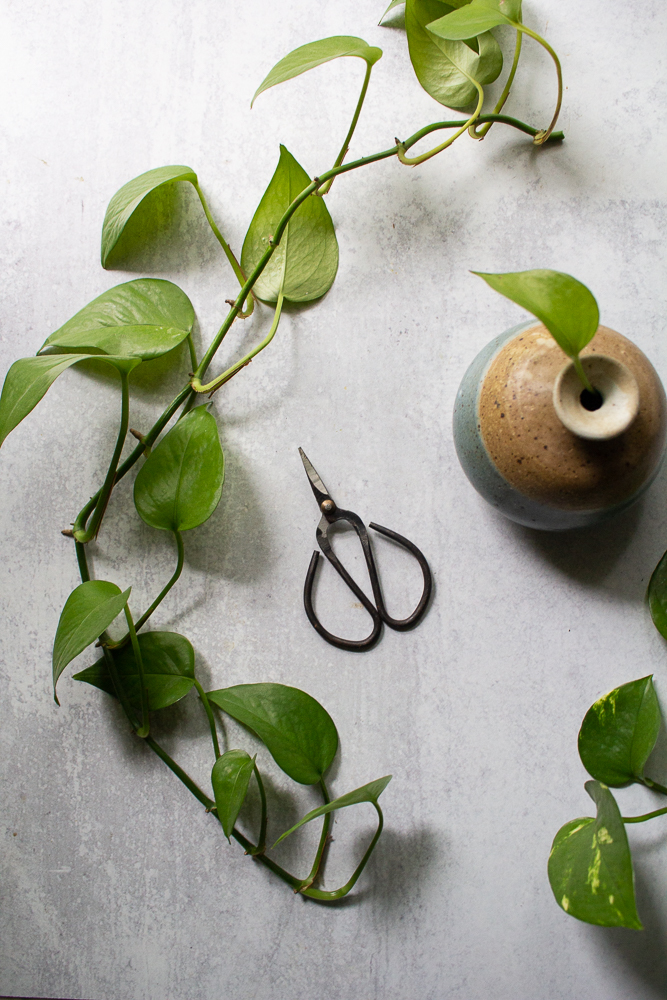
What Is Pothos?
Pothos is an ivy-like tropical plant know for its heart shaped leaves (a lot of people mistake it for philodendron). Pothos is differentiated by showing white or yellow highlights on the leaves, known as variegation, when it has enough sun. However it can lose those highlights when sunlight is low, which makes it look more like a philodendron.

How To Propagate Pothos Plants
Step 1: Cut off one of the larger “arms” of the plant that hangs down. Choose the arm that contains the most mature leaves. You can tell which ones are the most mature, as they have little “feet” or nubs on the stem that protrude out. These are called “aerial roots” and will actually become the new root of the plant. It’s helpful to cut the long hanging arms of the plants that have the most developed aerial roots, leaving the younger leaves on the mother plant to develop more.

Step 2: Cut to the left and right sides of the aerial root. You will have something left that looks a little bit like a T at the bottom of the leaf.

Step 3: Do this for all of the leaves on the arm you just cut.
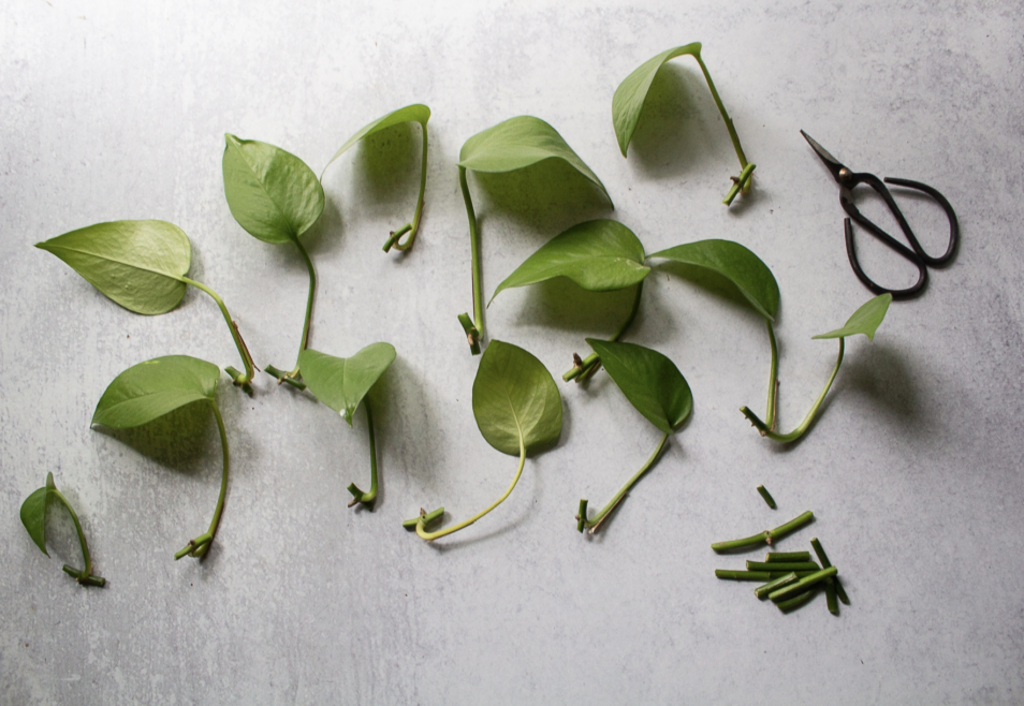
Step 4: If you find a stem that has a couple of aerial roots, just leave them be. You can see them in the photo below. They will create multiple roots, strengthening the plant.
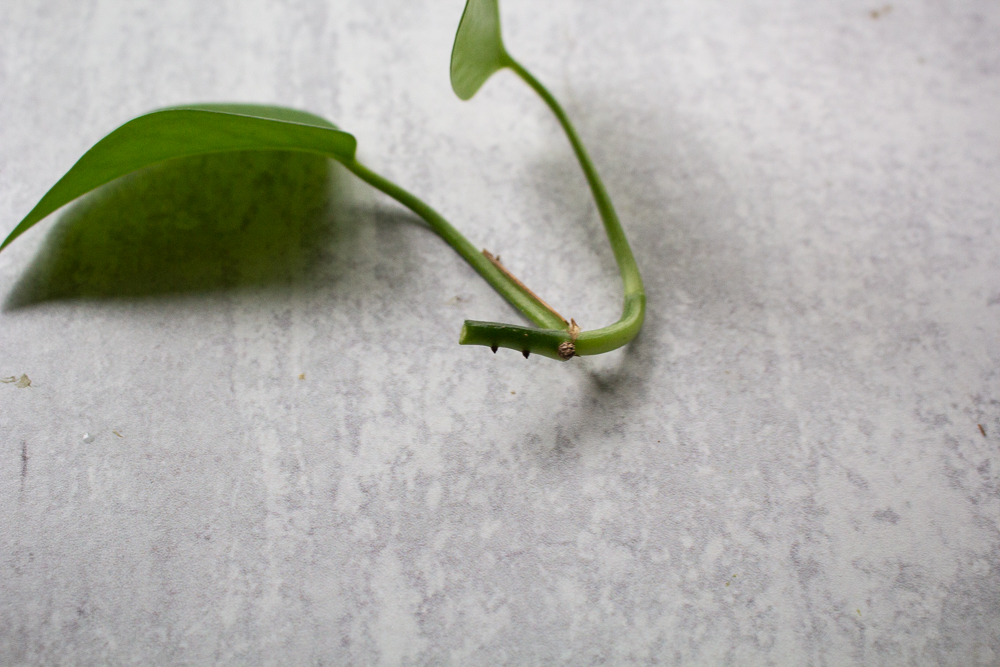
Step 5: Place all of the leaves with aerial roots into a glass of water.
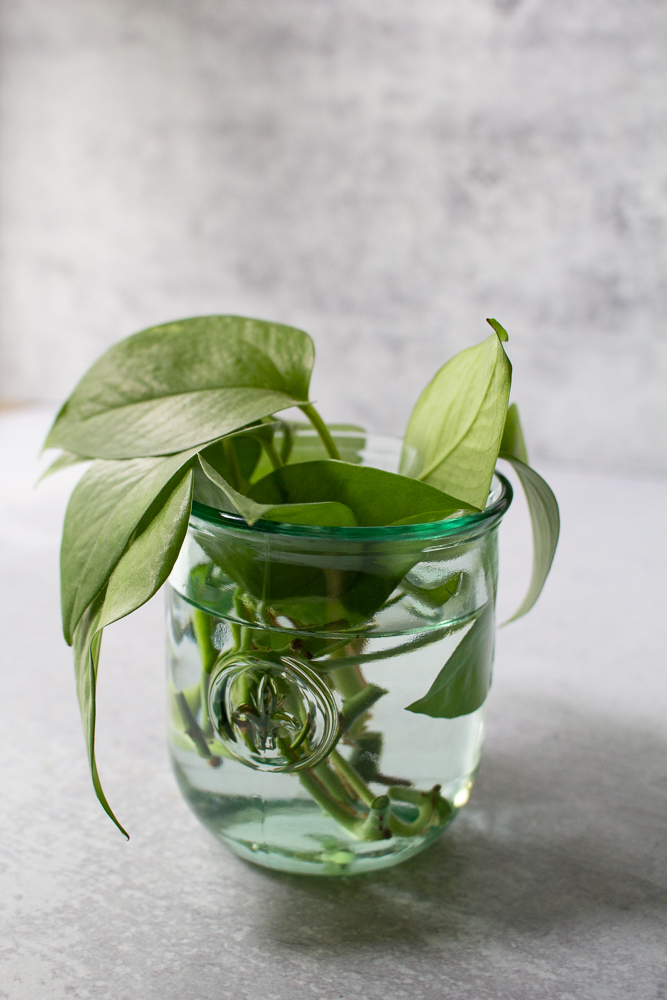
Step 6: Replenish water regularly and keep it fresh.
Step 7: After a 2-4 weeks, check on the roots to see if they’ve grown. RepThey can almost indefinitely live in water, but I love how they flourish in soil. At this point, they can live simply in water, or planted in soil. If you leave them in the water, be sure to check it often as the water can evaporate. Also refresh the water as needed.
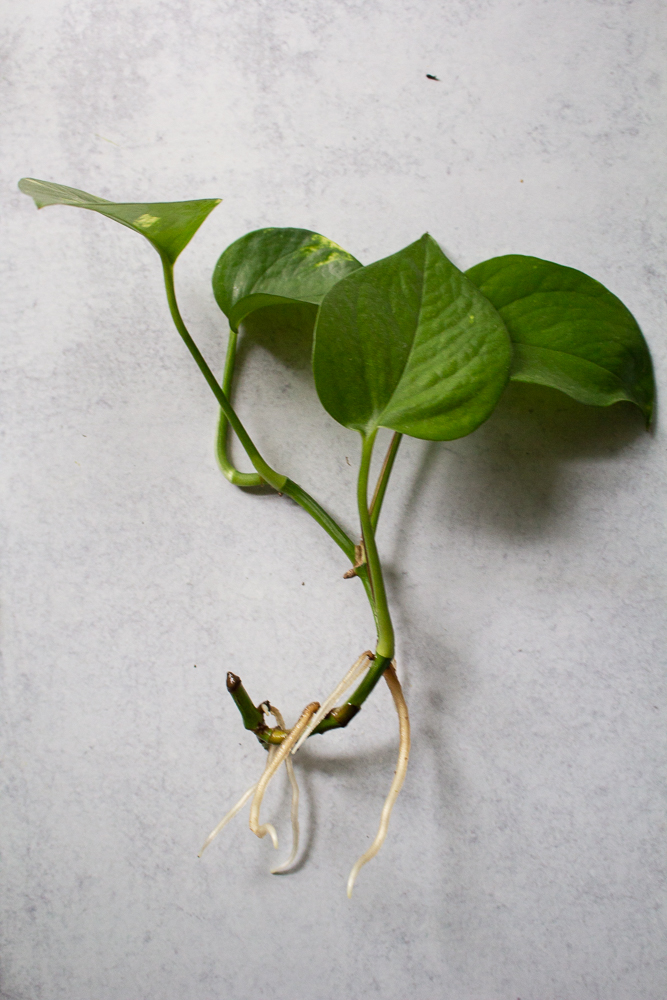
Step 8: Now if you’ve decided to plant these baby Pothos, then simply find a good pot, some potting soil, and plant them all together. They will soon form another complete plant to enjoy. Planting tip from my friend Amie Sue: she uses a coffee filter at the bottom of the pot before filling it with soil so that water is able to escape through the bottom opening but not dirt.
Enjoy The Process!
I find that every few months, my main mother (or baby) pothos plant releases another long arm of leaves. At this point, I propagate again, given that the plant has enough arms and leaves for it to keep thriving. You don’t want to cut too much off, just enough to create another plant. The one on the left below is actually a baby plant. The one on the right is the grand baby! It’s such a fun process!
Pothos Care
Remember to wash the leaves once in a while, as they can get dusty. If you like the variegated features of the plant, then give it a little sun once in a while. But they do well in shade, and don’t require much. Just a little attention, water, love, and care.

Leave a Reply